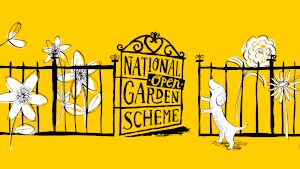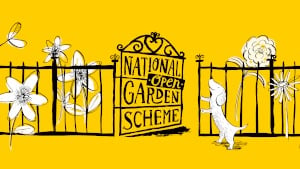About 53 Fort Royal Hill
This garden is naturally beautiful throughout the year and particularly in spring and mid summer. There is some evidence of a Japanese influence in the use of height provided by plants, trees and artefacts and structures to encourage the eye to move upwards and to fill all the space that is available, particularly important given the size of this town garden and enables the space to seem bigger than it actually is!
The garden was originally a walled garden in its entirety but when the detached Georgian/Victorian house was divided into two, No 53 retained the original high wall along its length providing both shelter and shade as well as privacy. The positive decision to use open trellis down the centre of the original garden to act as the divider between the now two houses provides appropriate great support for clematis, roses, honeysuckle and other climbers which enhance the private yet open nature of this divide.
The garden itself creates the impression of 3 ‘rooms’: as you walk in, there is a small lawned area with planted borders, shrubs and trees where the sun filters through in the morning and early afternoon; then an enclosed area where the planting, including trees come close to the path and where a very shady area exists with ferns and where other shade loving plants and trees thrive; and finally a very open and sunny patio area where colour abounds and where borders and clusters of containers make the most of the full sun, lasting into the evening in summer. Places to sit and relax are woven into the rich tapestry of colour, sun and shade throughout the day, enabling the eye to take in the different aspects of the garden and enjoy its many faces and moods. Many visitors comment on how hidden away the garden is from the hustle and bustle of the world outside and how it feels like a ‘secret garden’ which they hadn’t realised existed here. The tranquillity and peaceful atmosphere in the garden are greatly valued.
The soil in the garden varies from free draining to heavy clay, and along with the variability of sun and shade, allows for a great variety of planting. Wherever possible succession planting is practised and the use of containers also provides the ability to move plants according to their needs and to where they do best. Similarly, the pots can be moved to provide colour, texture or height as required as well as to fill any unwanted gaps that might occur. Peat free compost is used and organic methods are employed with no chemicals used. Making the garden easy to maintain is important and having it full of plants and shrubs ensures that minimal weeding is required all year round.
Wildlife is encouraged into the garden with bee-friendly plants provided such as mahonia and allium and the bee population has certainly grown over time, along with the frequency of visiting butterflies, including the holly blue. A large number of birds regularly visit the garden, including black caps, greater spotted woodpecker, wren, dunnock, blue tits, great tits, robin, coal tits, goldfinches, blackbirds, collared doves etc. and usually there is at least one or two nests per year somewhere in the garden. Urban foxes, squirrels and a single hedgehog have also visited periodically. Perhaps quite surprising for a garden so small in size and so close to the city centre.





.jpg)
.jpg)
.jpg)
.jpg)
.jpg)
.jpg)